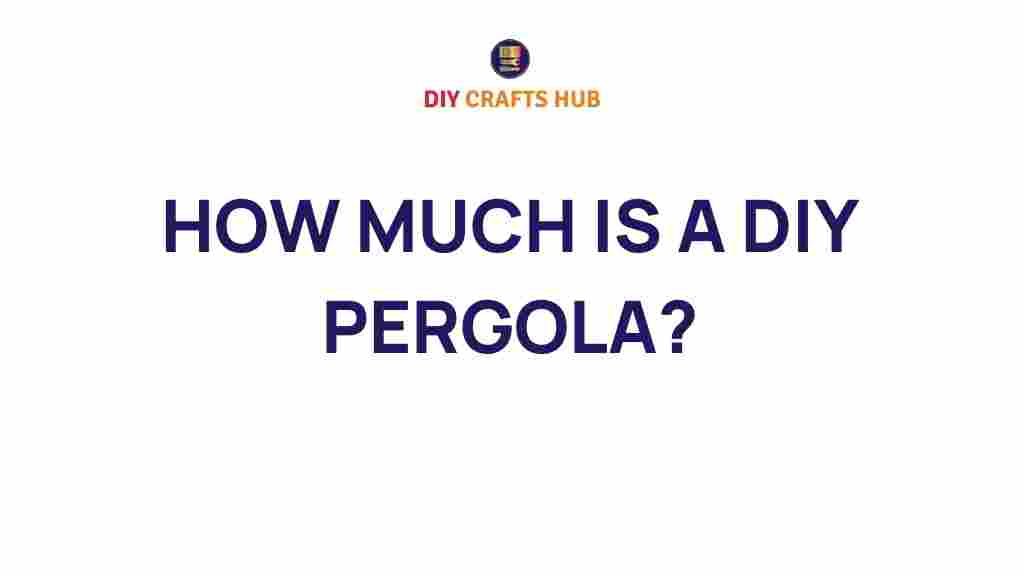Building a pergola in your backyard can transform your outdoor space, offering shade, style, and an ideal spot for relaxation. While a **DIY pergola** might seem like a cost-effective solution, it’s essential to understand the true expenses and effort involved. Let’s dive deep into what you need to know before starting this ambitious project.
What is the True Cost of a DIY Pergola?
When considering a DIY pergola, you might think you’re saving money by bypassing professional installation. However, there are several costs—both visible and hidden—that require consideration.
1. Material Costs
The choice of materials can greatly influence the overall expense of your DIY pergola. Here are some common options:
- Wood: A traditional choice offering natural beauty. Cedar and redwood are popular but can cost $25 to $35 per square foot.
- Metal: Durable and modern, often priced at $15 to $30 per square foot, though you may need rust-proof coatings.
- Vinyl: A low-maintenance option costing $20 to $40 per square foot.
Factor in additional materials like brackets, screws, anchors, and paint or sealant, which can add another $100 to $200 to your budget.
2. Tool Costs
If you don’t already own the necessary tools, be prepared for these expenses:
- Drills and saws: Essential for cutting and assembling materials, costing between $50 and $200.
- Measuring tools: Tape measures, levels, and squares are affordable but vital, costing around $20 to $50.
- Post-hole digger: Needed for securing posts, available for $30 to $60.
Renting tools may reduce costs, but you’ll need to account for rental fees.
3. Time Investment
A DIY pergola can take anywhere from 15 to 30 hours to build, depending on the complexity and your experience. If your time is limited, consider whether the savings outweigh the effort required.
Steps to Building a DIY Pergola
Before starting your project, it’s crucial to follow a structured approach. Here’s a step-by-step guide to help you along the way:
Step 1: Planning and Design
Begin by deciding on the size, location, and style of your pergola. Consider sun exposure, purpose, and aesthetics.
- Sketch a design or use online tools for visualization.
- Check local building codes or permit requirements.
Step 2: Purchasing Materials
Buy materials that match your design and budget. Remember to purchase extra supplies to account for mistakes or adjustments.
Step 3: Preparing the Site
Clear the area and mark where the posts will go. Use a level to ensure a flat surface. This step is critical for the stability of your pergola.
Step 4: Building the Pergola
- Dig holes for the posts and secure them using concrete for stability.
- Attach beams and rafters according to your design plan.
- Ensure all components are level and securely fastened.
For detailed guidance, check out our DIY pergola construction guide.
Step 5: Finishing Touches
Seal or paint your pergola to protect it from the elements. Add decorative touches like hanging lights or climbing plants for aesthetic appeal.
Common Challenges and Troubleshooting Tips
Even with meticulous planning, building a DIY pergola can present challenges. Here’s how to address some common issues:
1. Uneven Ground
If the installation site isn’t level, use a combination of digging and fillers to create an even base. A level foundation is essential for stability.
2. Incorrect Measurements
Double-check all dimensions before cutting materials. Investing in high-quality measuring tools can save you time and frustration.
3. Weather Challenges
Unpredictable weather can delay your project. Build during a dry season and consider weatherproofing your materials in advance.
4. Lack of Expertise
If you’re unsure about your skills, consult online tutorials or seek advice from experts. You can also consider hiring a professional for certain steps to ensure quality.
For further insights, refer to this comprehensive pergola-building guide.
Conclusion: Is a DIY Pergola Worth It?
Building a DIY pergola can be a rewarding experience, offering customization and potential cost savings. However, it’s important to weigh the true costs, including materials, tools, and time investment, against your budget and expertise. By understanding the steps involved and preparing for challenges, you can create a stunning addition to your outdoor space.
Looking for more inspiration? Explore our home improvement projects for additional ideas and tips!
This article is in the category Home & Decor and created by DIYCraft Team
